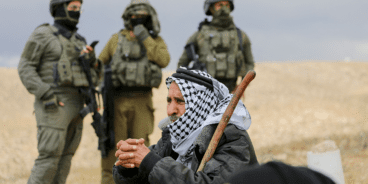
End of the Argument: How We Won the Debate Over Stopping Genocide
The following article written by Prof. the Hon. Gareth Evans was originally published in Foreign Policy.
Just 10 years ago, the international response to mass-atrocity crimes — genocide, ethnic cleansing, and other large-scale crimes against humanity — was a consensus-free zone. For all the “never again” rhetoric and human rights conventions launched with fanfare and sincerity after World War II, an unholy mess was made of dealing with every major man-made human catastrophe from Cambodia in the 1970s to Rwanda and the Balkans in the 1990s.
Today, the “responsibility to protect” doctrine, or R2P, has become a commonplace of international diplomacy, invoked in crises from the Congo to Kenya to, most notably, this year’s struggle in Libya. So how did we go from complete ideological division on the response to mass-atrocity crimes to the current overwhelming consensus, at least on basic principles?
The problem had always been the bitter conceptual divide between those, largely in the global North, who rallied to the banner of “humanitarian intervention” or the “right to intervene,” and those, largely in the global South, who — conscious of their fragility and remembering too well the “civilizing missions” of the former colonial powers — argued that state sovereignty was absolute and internal events none of the rest of the world’s business.
To bridge that gulf, in 2001 my colleagues on the International Commission on Intervention and State Sovereignty and I launched the “responsibility to protect” concept. Four years later it was endorsed unanimously by more than 150 heads of state and government at the 2005 U.N. World Summit.
There were three basic reasons the new idea caught on so quickly. First, we used language that was inherently less confrontational — emphasizing no one’s “right” but everyone’s “responsibility,” and placing the focus on action “to protect” rather than “to intervene.” Second, it was made clear that the primary responsibility to protect people at risk lies with the state itself, not outsiders. And third, it was emphasized that R2P was about a lot more than coercive military intervention. Whereas the choices under “humanitarian intervention” boiled down to either sending in the Marines or doing nothing, those under R2P are nuanced and multidimensional: Start with preventive activity of all kinds; if that fails, move to diplomatic persuasion, then to nonmilitary forms of coercion like sanctions, and only as an absolute last resort to military action.
Since 2005, moving from rhetoric to effective practice has had its difficulties, and plenty remain. But step by step, R2P has been gaining traction, and 2011 was when it really came of age: institutionally, conceptually, and on the ground.
Better institutional machinery is rapidly evolving. The United Nations, regional organizations, and national governments have been establishing “focal points”: officials whose day job it is to monitor emerging crises and energize responses. In the United States, President Barack Obama recently directed the establishment of an interagency Atrocities Prevention Board designed to coordinate government responses to these situations, taking those responses to a new level of effectiveness.
Conceptually, we have seen an end to most of the confused debates that plagued earlier crises in places such as Burma, Sri Lanka, and Georgia about what are and are not R2P situations. There was no argument about the events in Kenya in early 2008, those in Ivory Coast early this year, or those in Libya in the context of Benghazi, where Muammar al-Qaddafi talked — in language eerily reminiscent of the Rwandan genocidaires — of showing “no mercy and no pity” for the “cockroaches” who had risen against him.
Most dramatically, the U.N. Security Council has now not only expressly invoked R2P but given it effective sharp-end military application in Ivory Coast and Libya. The Libya intervention was much more prolonged and the interpretation by the NATO-led forces of the scope of its mandate much more controversial, but it unquestionably worked — certainly in preventing a major massacre in Benghazi and arguably in preventing many more civilian casualties elsewhere than would otherwise have been the case. If the response had been as effective in 1994 in Rwanda, 800,000 victims of the worst modern genocide would still be alive.
Major U.N. General Assembly debates, most recently and importantly in the aftermath of the Libya controversy in July, have shown overwhelming commitment to the fundamental principles of R2P. As Secretary-General Ban Ki-moon said in September, “Our debates are now about how, not whether, to implement the responsibility to protect.”
True, there remains an ever-present political challenge to get key governments to overcome their inertia and their sometimes cynical self-interest. In October, the Russian and Chinese veto of a very cautiously drafted Security Council resolution threatening sanctions against the Syrian regime was an unhappy demonstration that for every two steps forward on R2P there is usually a step back.
But by any measurement, the achievement of the past decade — universal agreement that state sovereignty is not a license to kill — has been tremendous.
Related Content


Atrocity Alert No. 445: Sudan, Syria and Eritrea
